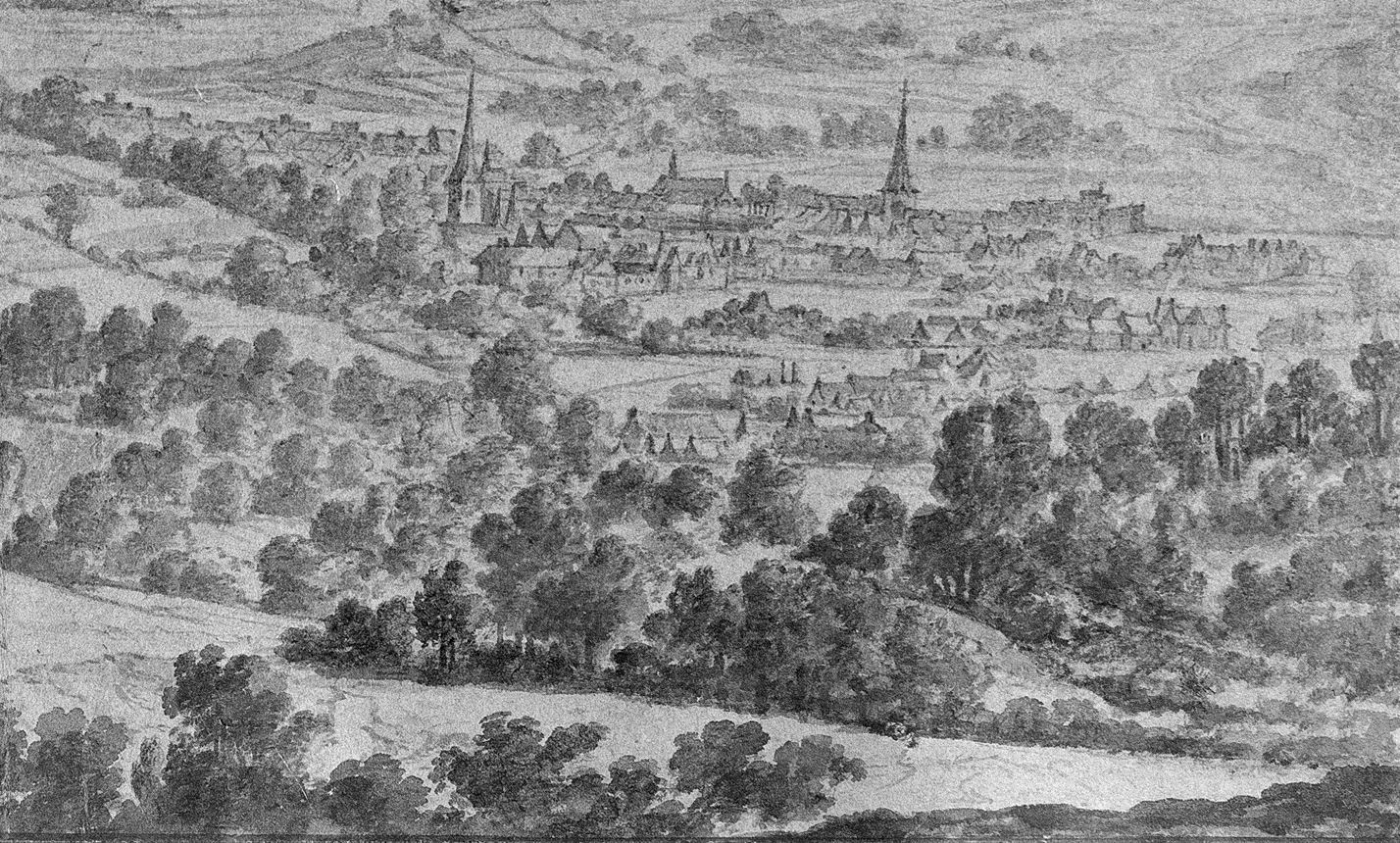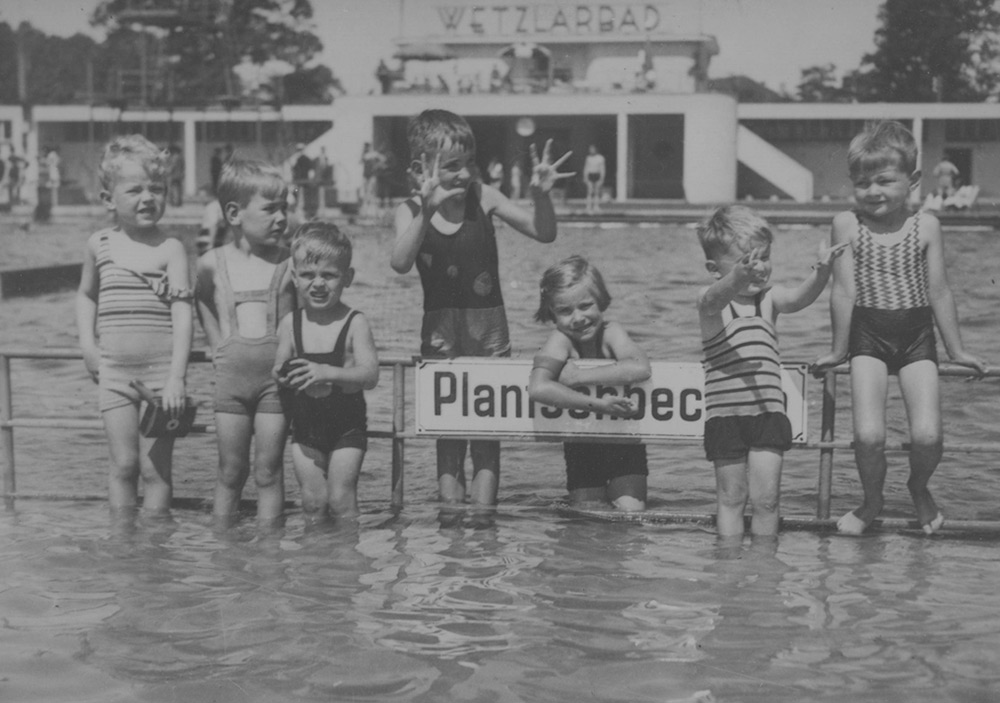‘Leisure’ and ‘physical exercise’ of the masses were emerging concepts in the 1920s. Leisure time was, of course, initially reserved for the wealthy upper class or granted by progressive-minded industrialists. After the First World War, the eight-hour day for workers (with a six-day week) was introduced in many European countries (Germany in 1918, Belgium in 1921), giving the workforce more free time.
In fact, the Wetzlarbad in Eupen stands for the leisure industry that emerged in the 1920s, for the culture of amusement and diversion. In this respect, Eupen is not unique. The Capitol cinema, which opened in 1932, was also a place of modern entertainment culture until 1970.
The Wetzlarbad, situated in Eupen’s lower town and next to the river Hill, was inaugurated on 5 June 1932. Plans by the Aachen architects Helg & Dauven served as a model. The idea of its founder, Robert Wetzlar (1847-1912), was to provide for physical exercise as relaxation for the working population. For this purpose, there was a swimming pool to meet Olympic standards, along with a five-metre-high diving tower. The water for the swimming pool was diverted from the Hill to feed the pool.
Since it was planned as a community pool, however, it also brought a lot of unrest to the very Catholic town because of the permissiveness that prevailed there. This aspect in particular makes it clear how the population of Eupen positioned itself in the 1930s: although the church tried to influence ‘manners and morals’, this did not stop the population from preferring mixed-sex opening hours.
In 1940, the National Socialialists temporarily renamed the bath ‘Waldbad’ as the founder’s Jewish roots were incompatible with Nazi ideology.
The Wetzlarbad, which got its original name back after the liberation, shaped social cohesion among the population of Eupen for over 80 years, until it closed in 2012. Generations of Eupeners learned to swim and met there on the lawn in summer. As late as the 2000s, over 20,000 swimmers visited the baths each season, which once again underlines its importance for social life in Eupen.
At weekends in the post-war period, the bath even attracted 1,500-2,000 visitors per day, making it a crowd magnet beyond the borders of the town (1). In record years (1989), there were even up to 69,000 visitors per season.
Accordingly, a document of the Ministry of the German-speaking Community also estimated the importance of the bath:
‘The facility is significant for reasons of architectural history, reflecting the development of sports facility construction (especially in the interwar period), the social and economic history as well as the urban planning and settlement history of the town of Eupen (…).’ (2)
Over the course of the 1960s, sports and leisure culture experienced a breakthrough. Economic resurgence and rising levels of productivity enabled both working and middle-class families to enjoy more leisure time and increasingly attend leisure. Thus, the baths were modernised in the 1980s.
The Wetzlarbad was a commonplace of leisure activities for the people of Eupen. The debates that flared up over bathing costumes and communal swimming are a moral portrait of the early 20th century in Eupen. The bath, one of the art-historical treasures of the Hütte neighbourhood, was demolished in 2016. In its place, a new combined bath was built in 2018, which then became one of the many victims of the severe floods in 2021.
References
(1) „Die Reise- und Feriensaison 1947“, in Grenz-Echo, 10/09/1947.
(2) Ministerium der Deutschsprachigen Gemeinschaft (Hg.), Die Industriegeschichte der Eupener Unterstadt. Denkmalwerte Bauten des Industriezeitalters, Eupen 2015, p. 50.
Further reading
Sabine Haring, „Wer war Robert Wetzlar“, in Geschichtliches Eupen XL (2006), pp. 51-52.


